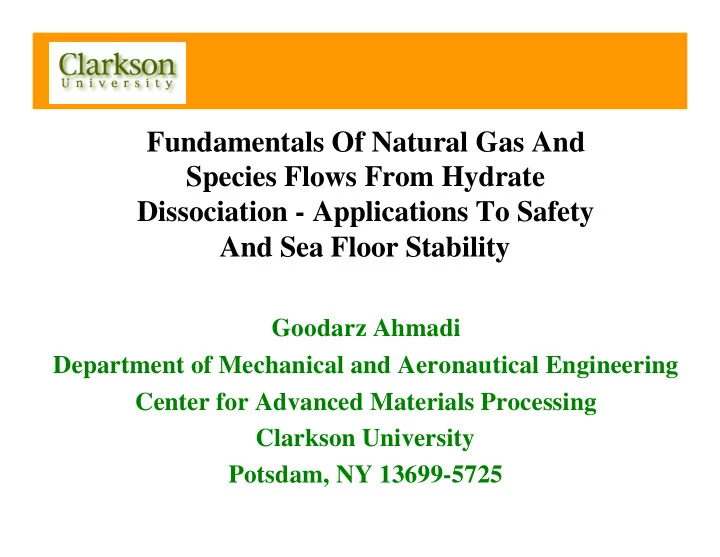

Fundamentals Of Natural Gas And Species Flows From Hydrate Dissociation - Applications To Safety And Sea Floor Stability Goodarz Ahmadi Department of Mechanical and Aeronautical Engineering Center for Advanced Materials Processing Clarkson University Potsdam, NY 13699-5725
OUTLINE • • Objective • • Statement of Work • • Preliminary Results
Objectives • • Natural Gas-Water-Solid Mixture Flows in the Reservoir During Hydrate Dissociation • • Computational Models for Two- and Three-phase Flows • • Assess the Potential for Sea Floor Instability
TASKS Task 1. Laboratory Experiments • • Subtask 1.1 - Transparent Hydrate Chamber - Optical Measurements of Phasic Velocities - Dissociation in Consolidated and Unconsolidated Sediments • • Subtask 1.2 - Shear Flow Apparatus - Optical Velocity Measurements
Task 2. Model Development • • Subtask 2.1 - Thermodynamic Model - Three Phase Flows • • Subtask 2.2 - Material Characterization - Material Parameters of Multiphase Mixtures • • Subtask 2.3 - User’s Manual
Task 3. Safety and Seafloor Stability • • Subtask 3.1 - Pressure Buildup - Drilling with or without Chilling Fluid • • Subtask 3.2 - Analysis of Seafloor Stability - loss of strength and liquefaction • • Subtask 2.3 - User’s Manual
Schematics of the experimental setup.
Schematics of the measurement system.
Experimental setup.
Transparent hydrate chamber.
Transparent hydrate chamber.
Pressure sensors.
Density variations in the reservoir during gas flow.
Velocity magnitude variations in the reservoir during gas flow.
Velocity vector field in the reservoir during gas flow.
Recommend
More recommend